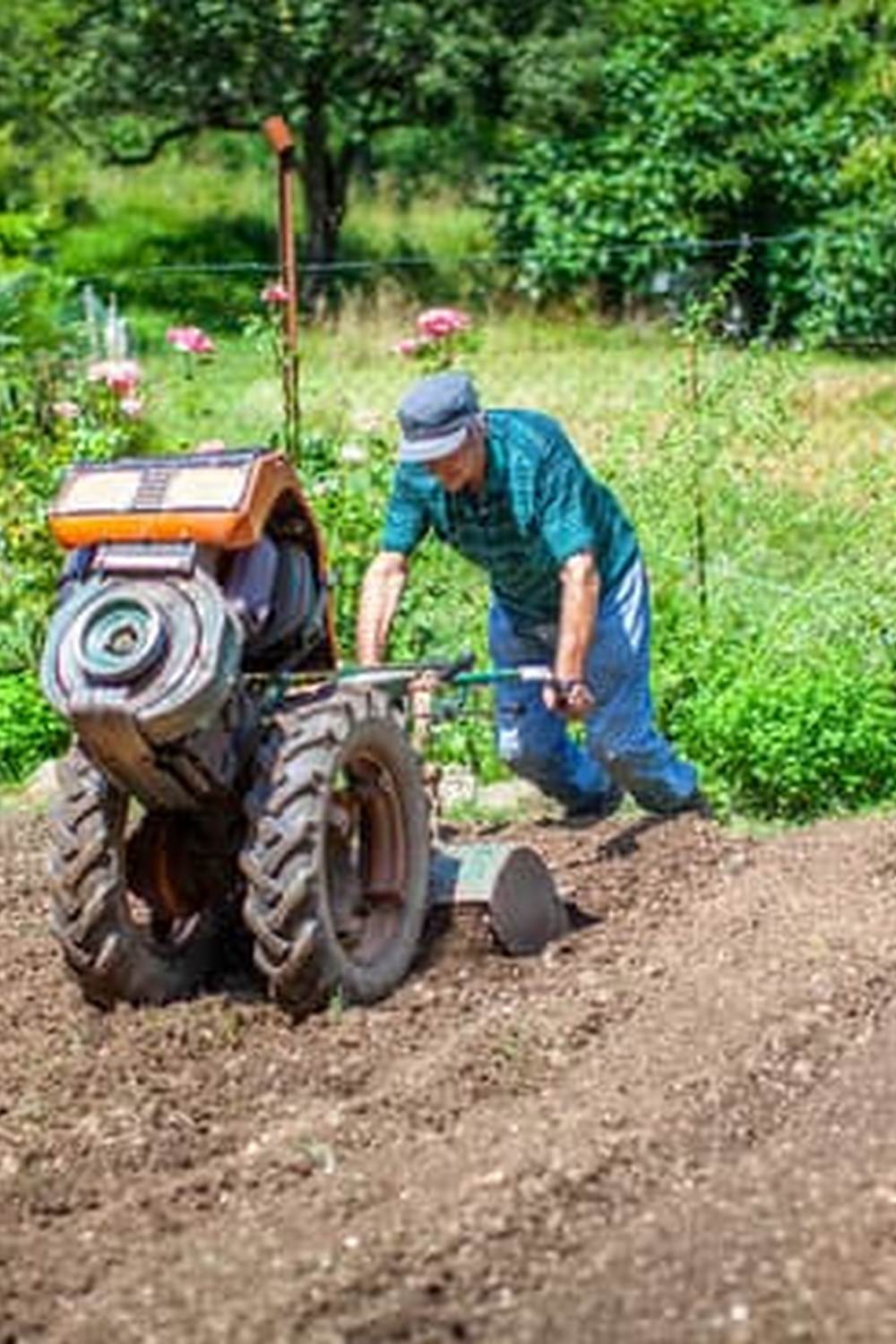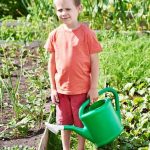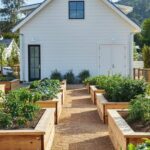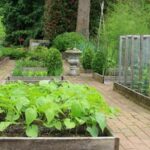Are you interested in starting your own indoor vegetable container garden? It’s a great way to grow your own produce, even if you have limited outdoor space or are new to gardening.
In this article, we’ll explore the benefits of easy indoor vegetable container gardening and provide tips for getting started. Whether you’re looking to add some greenery to your home, reduce your grocery bill, or simply enjoy the satisfaction of growing your own food, indoor vegetable container gardening is a fantastic option.
One of the key advantages of indoor vegetable container gardening is that it allows you to grow fresh, nutritious produce right in your own home. With the right containers and proper care, you can enjoy a bountiful harvest of vegetables, herbs, and even some fruits.
This method is also ideal for beginners who may feel overwhelmed by traditional outdoor gardening methods. Additionally, it’s perfect for those who live in apartments or homes with limited outdoor space – all you need is a sunny windowsill or a well-lit corner to get started.
Not only does indoor vegetable container gardening provide access to fresh produce, but it also offers the opportunity to connect with nature and experience the satisfaction of nurturing plants from seed to harvest. Plus, there’s something incredibly rewarding about savoring the flavors of vegetables that you’ve grown yourself.
Whether you’re craving a juicy tomato for a salad or some fresh herbs for seasoning, having an indoor vegetable garden can add joy and flavor to your culinary adventures. So let’s dive into the world of easy indoor vegetable container gardening and explore all the wonderful possibilities it has to offer.
Choosing the Right Container
When it comes to easy indoor vegetable container gardening, choosing the right container is crucial for the success of your plants. There are several factors to consider when selecting a container for indoor vegetable gardening, including size, material, and drainage. The right container will provide adequate space for your vegetables to grow, while also ensuring proper moisture levels and healthy root development.
First and foremost, it’s important to choose a container that is large enough to accommodate the mature size of the vegetables you plan to grow. For example, deep-rooted vegetables like tomatoes and peppers will require larger containers compared to shallow-rooted herbs or salad greens. Additionally, consider the material of the container.
Plastic containers are lightweight and retain moisture well, while clay or ceramic pots are porous and allow for better air circulation. Finally, proper drainage is essential for preventing waterlogged soil and root rot. Look for containers with drainage holes at the bottom or be prepared to drill your own if necessary.
It’s also worth considering self-watering containers or planter boxes with reservoirs that can help regulate moisture levels and reduce the frequency of watering. These options can be especially convenient for those new to easy indoor vegetable container gardening as they provide a more forgiving environment in terms of maintaining consistent moisture levels.
| Container Consideration | Description |
|---|---|
| Size | Choose an appropriately sized container based on the mature size of your vegetables. |
| Material | Consider the benefits of plastic vs. clay/ceramic pots in relation to moisture retention and air circulation. |
| Drainage | Ensure that your chosen containers have adequate drainage holes or make provisions for creating them. |
In summary, selecting the right containers is an important first step in setting up an easy indoor vegetable container garden. By considering size, material, drainage, and even additional features such as self-watering systems, you can create an optimal environment for your indoor vegetable garden to thrive.
Selecting the Perfect Vegetables
When it comes to easy indoor vegetable container gardening, selecting the right vegetables is crucial for success. Fortunately, there are plenty of options that thrive in indoor environments and are perfect for beginners. Some of the easiest vegetables to grow in containers indoors include tomatoes, peppers, lettuce, spinach, and herbs like basil and cilantro.
Tomatoes are a popular choice for indoor container gardening due to their versatility and abundance. They can be grown in various types of containers and require moderate sunlight to thrive. Peppers also do well in containers and can add a pop of color and flavor to your indoor garden. Lettuce and spinach are excellent choices for those who prefer leafy greens, as they don’t require a lot of space or direct sunlight.
Herbs like basil and cilantro are perfect for adding fresh flavors to your cooking while also being relatively easy to grow indoors. They can be grown in small pots on a sunny windowsill or under artificial lighting. When choosing vegetables for your indoor garden, consider the space you have available, the amount of light your home receives, and the time you have for maintenance.
In addition to these easy-to-grow options, it’s important to consider the specific needs of each vegetable when selecting plants for your indoor container garden. Some vegetables may require more sunlight or space than others, so be sure to do your research before making your selections. With the right vegetables and proper care, you can enjoy a bountiful indoor vegetable garden year-round.
| Types of Vegetables | Key Considerations |
|---|---|
| Tomatoes | Versatile, moderate sunlight |
| Peppers | Adds color and flavor |
| Lettuce & Spinach | Space-saving and low light requirements |
| Herbs (Basil & Cilantro) | Fresh flavors with minimal space requirements |
Preparing the Soil
When it comes to indoor vegetable container gardening, having the right soil mix is crucial for the success of your plants. Here are some tips for creating a nutrient-rich soil mix that will provide your indoor garden with everything it needs to thrive:
- Choose the right type of soil: When it comes to indoor vegetable container gardening, using high-quality potting soil is essential. Look for a potting mix that is specifically formulated for growing vegetables in containers. These mixes are designed to provide the proper balance of nutrients and drainage that your plants need.
- Consider adding organic matter: To further enrich your soil mix, consider adding organic matter such as compost or well-rotted manure. This will help improve the overall structure of the soil and provide additional nutrients for your plants.
- Ensure proper drainage: Proper drainage is crucial for the health of your indoor vegetable container garden. Be sure to choose containers with adequate drainage holes and consider adding a layer of gravel or small stones at the bottom of the container to aid in drainage.
By following these tips for preparing the soil, you can ensure that your indoor vegetable container garden has everything it needs to thrive and produce a bountiful harvest. With the right soil mix, you’ll be well on your way to enjoying fresh, homegrown vegetables right from your own home.
Planting and Watering
When it comes to easy indoor vegetable container gardening, one of the most important steps is planting and watering your vegetables properly. Follow these simple steps to ensure the success of your indoor garden:
1. Choose the right containers: Select the best containers for your vegetables, keeping in mind their size, material, and drainage. For example, leafy greens such as lettuce and spinach can thrive in shallow containers, while root vegetables like carrots and radishes need deeper pots.
2. Prepare the soil: Create a nutrient-rich soil mix for your indoor containers using a combination of potting soil, compost, and perlite for proper drainage. The right type of soil and good drainage are crucial for healthy plant growth.
3. Planting: When planting your vegetables in containers, make sure to follow the spacing guidelines for each type of vegetable. This will ensure that they have enough room to grow without competing for space and nutrients.
4. Watering: Proper watering is essential for the success of your indoor vegetable container garden. Use a watering can with a narrow spout to water directly at the base of the plants, avoiding wetting the leaves which can lead to disease.
5. Maintaining proper moisture levels: Keep an eye on the moisture levels in your containers and adjust your watering schedule based on the specific needs of each vegetable. Check the soil regularly by inserting your finger into the top layer – if it feels dry to the touch, it’s time to water.
Following these steps will help you create a thriving indoor vegetable container garden, providing you with fresh produce right from your own home. Just remember to choose suitable containers, prepare quality soil mixes and keep an eye on proper watering techniques tailored to each plant’s needs.
Providing Adequate Light
When it comes to indoor vegetable container gardening, providing adequate light is crucial for the success of your plants. Since most indoor environments may not receive as much natural sunlight as outdoor gardens, it’s important to consider alternative lighting options to ensure that your vegetables thrive.
Understanding Light Requirements
Different vegetables have varying light requirements, so it’s essential to understand the specific needs of the plants you’re growing. Leafy greens like lettuce and spinach require less light compared to fruiting vegetables such as tomatoes and peppers. Before choosing an artificial lighting option, take into account the light requirements of the vegetables you plan to grow.
Artificial Lighting Options
For those who don’t have access to ample natural sunlight, artificial lighting is a great solution for ensuring that your indoor vegetable container garden receives enough light. LED grow lights are an excellent choice for indoor gardening as they are energy-efficient, produce little heat, and can be adjusted to provide the ideal light spectrum for plant growth. Other options include fluorescent grow lights and high-intensity discharge (HID) lamps, each with their own set of benefits and considerations.
Creating a Lighting Schedule
Once you’ve chosen the right artificial lighting option for your indoor vegetable container garden, it’s important to create a consistent lighting schedule. Most vegetables require around 12-16 hours of light per day, so setting a timer for your grow lights can help mimic natural sunlight cycles. Be sure to adjust the height and intensity of the lights as needed based on the growth stage of your plants.
By understanding the light requirements of your vegetables and utilizing appropriate artificial lighting options, you can ensure that your indoor vegetable container garden receives the necessary light for successful growth and bountiful harvests.
Maintenance and Care
Once you have successfully planted your indoor vegetable container garden, it is crucial to ensure proper maintenance and care to help your plants thrive. Fertilization, pest control, and pruning are essential aspects of maintaining a healthy indoor garden.
Fertilization
Indoor vegetable container gardening requires the use of fertilizers to provide essential nutrients for plant growth. Choose a high-quality, balanced fertilizer specifically formulated for vegetables. Be sure to follow the instructions on the fertilizer package carefully and avoid over-fertilizing, as this can be harmful to your plants. It is recommended to fertilize your indoor vegetable container garden every two to three weeks during the growing season.
Pest Control
Even indoors, your vegetable plants may still be susceptible to pests such as aphids, spider mites, and whiteflies. To prevent infestations, regularly inspect your plants for any signs of pests or diseases. If you notice any issues, consider using natural pest control methods such as insecticidal soap or neem oil. These environmentally friendly options can help keep pests at bay without harming your plants or the environment.
Pruning
Proper pruning is important for maintaining the health and productivity of your indoor vegetable container garden. Regularly check for any dead or diseased leaves and remove them promptly to prevent the spread of disease. Additionally, prune your plants to encourage branching and improve air circulation. This will help prevent overcrowding and reduce the risk of fungal diseases.
By following these tips for maintenance and care, you can ensure that your indoor vegetable container garden remains healthy and productive throughout the growing season. Keep a close eye on your plants, address any issues promptly, and enjoy watching your homegrown vegetables flourish indoors.
Harvesting and Enjoying
In conclusion, indoor vegetable container gardening is a fantastic option for those who have limited outdoor space or are just starting out with gardening. With the right containers, soil mix, and selection of vegetables, anyone can enjoy the satisfaction of growing their own produce right in their own home. The convenience and accessibility of having fresh vegetables just a few steps away in your kitchen can’t be beaten.
Once you’ve put in the effort to choose the right containers, select your vegetables, prepare the soil, and provide proper care for your indoor garden, it’s time to reap the rewards. Harvesting your homegrown produce is a fulfilling experience that brings a sense of accomplishment and satisfaction. Whether it’s picking ripe tomatoes from your vine or harvesting crisp lettuces for a fresh salad, there’s nothing quite like enjoying the literal fruits (or vegetables.) of our labor.
Furthermore, having a bountiful harvest from your indoor vegetable container garden opens up new opportunities to get creative in the kitchen. From simple salads and stir-fries to homemade sauces and soups, using your homegrown produce adds an extra layer of freshness and flavor to every dish. You can also make pickles, preserves, or even share your harvest with friends and family as thoughtful gifts.
The possibilities are endless when you have an abundance of flavorful vegetables at your fingertips. Easy indoor vegetable container gardening truly brings food sustainability and joy directly into your home.
Frequently Asked Questions
What Is the Easiest Vegetable to Grow in a Container?
The easiest vegetable to grow in a container is likely lettuce. It is low-maintenance, doesn’t need a lot of space, and can thrive with minimal sunlight. Plus, it grows relatively quickly, so you can enjoy your harvest sooner.
What Is the Best Container to Grow Vegetables Indoors?
When growing vegetables indoors, the best containers are ones that provide good drainage and are large enough for the plant’s roots to spread out. Options like plastic or ceramic pots with drainage holes work well for most vegetables.
What Vegetables Grow Well Together in a Container?
Certain vegetables grow well together in a single container due to their similar needs and growth habits. For example, you can plant tomatoes with basil, or carrots with radishes. This practice not only saves space but also promotes healthy growth through companion planting techniques.

If you’re looking to get into vegetable gardening, or are just looking for some tips on how to make your current garden better, then you’ve come to the right place! My name is Ethel and I have been gardening for years. In this blog, I’m going to share with you some of my best tips on how to create a successful vegetable garden.





